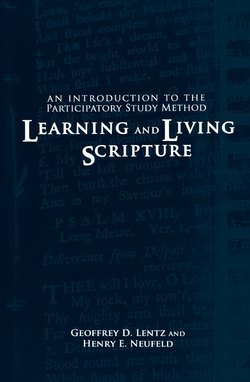Читать книгу Learning and Living Scripture - Geoffrey D Lentz - Страница 9
На сайте Литреса книга снята с продажи.
Оглавление2 Reading with God
Relating the Participatory Study Method to Lectio Divina.
The key principle of this study method is that the Bible should not be read like other books. It was intended to be read with God in mind. The goal of Bible study is not primarily more information about God but more formation in the way that God wants you to be.
Lectio divina, which means holy reading, is an ancient practice of studying scripture. It has been done in many ways since Origen described it around 220 AD. The great monastic traditions of the church further developed it into distinct phases and practices. The basic principle is that reading and studying the Bible should be remarkably different than reading the morning paper or studying Shakespeare. The Bible is a sacred text; it is a Living Word. It should not be studied like it is dead pages from history.
Lectio Divina is a practice that, through the power of the Holy Spirit, invites the risen Christ to interpret scripture to us anew. It is a prayerful reading of scripture that expects God to speak once again through his Holy Word. Prayer should influence the way you study the Bible, and studying the Bible should influence the way you pray. In lectio divina, it is impossible to tell when you are studying and when you are praying. There is no difference.
This practice is usually applied on small passages of scripture for an extended period of time. However, in the participatory study method, practices similar to those of lectio divina are used as a strategy to study as much as an entire book of the Bible. This is somewhat challenging because the scripture text is so large, but the prayerful approach is still crucial to Christian study of the scripture. In these lessons, the ancient practice of lectio is blended with modern study methods that takes into account the historical, cultural, and literary contexts.
The historical methods are important to us because they help connect us to people of a different time and place who experienced the same God that we do, learned from the same texts, and were led by the same Spirit. We do not study history because we think history is the meaning; we study history to help us meet those who wrote the texts and those who have studied the passages before us.
The four moments of lectio divina established by Guigo II, a 12th century Carthusian monk, in a book called The Monk’s Ladder. He organized the practice around four rungs that help us draw closer to God through reading the Bible.
Reading (lectio): The first rung of the ladder is reading. Believe it or not, this is the step most often skipped or diminished. It is important to do the Bible reading for each exercise, or each passage in your own study, in order to get the most out of it. Ideally it should be read several times so that you can become familiar with the language and themes of the text. This book is a guide to help you study the Bible. It is a supplement to the Biblical text; the text itself should have primary focus in your study. The steps of the participatory study method emphasize different ways of reading to help the text become part of you as you study.
Meditating (meditatio): The next thing to do is to prayerfully meditate on the text. Dig deep into it. Study the words. Break it down into pieces. Most of the activities in chapter seven (The Central Loop) are part of meditatio. Look up words to find their meaning. Notice if there are any words or actions that the Holy Spirit may be leading you to examine further.
Praying (oratio): Third, we learn to pray the text. Use what you have learned from the scripture to formulate a prayer. It may be helpful to write it down. This is where the text really becomes alive to us.
In the participatory study method, prayer is not seen as simply one part of the study; prayer permeates your study. You start with prayer and listening so that you will hear what God has to say through the text. Then you turn what you have heard from God back into prayer. The prayer (or conversation with God) never ceases!
Contemplating (contemplatio): The last step is the most difficult and rewarding. You have read the text, studied the text, prayed the text. Now it is time to be the text. Let it seep into your being. Be still and listen. Make sure you leave some time after the prayer for silence and reflection. It is said that Dan Rather once interviewed Mother Theresa about her prayer life. Rather asked her, “What do you say to God when you pray?”. Her answer was simple; “I don’t say anything; I just listen.” After that he asked, “Well, what does Jesus say to you?” And Mother Theresa answered, “Oh, He doesn’t say anything, either. He just listens.” Listening is what is important. You may not always feel anything, but God is there.
Another facet of contemplation is to learn to do the text. We cannot be just hearers of the word, we must also be doers of the word. Let the scripture change the way you live your life.
